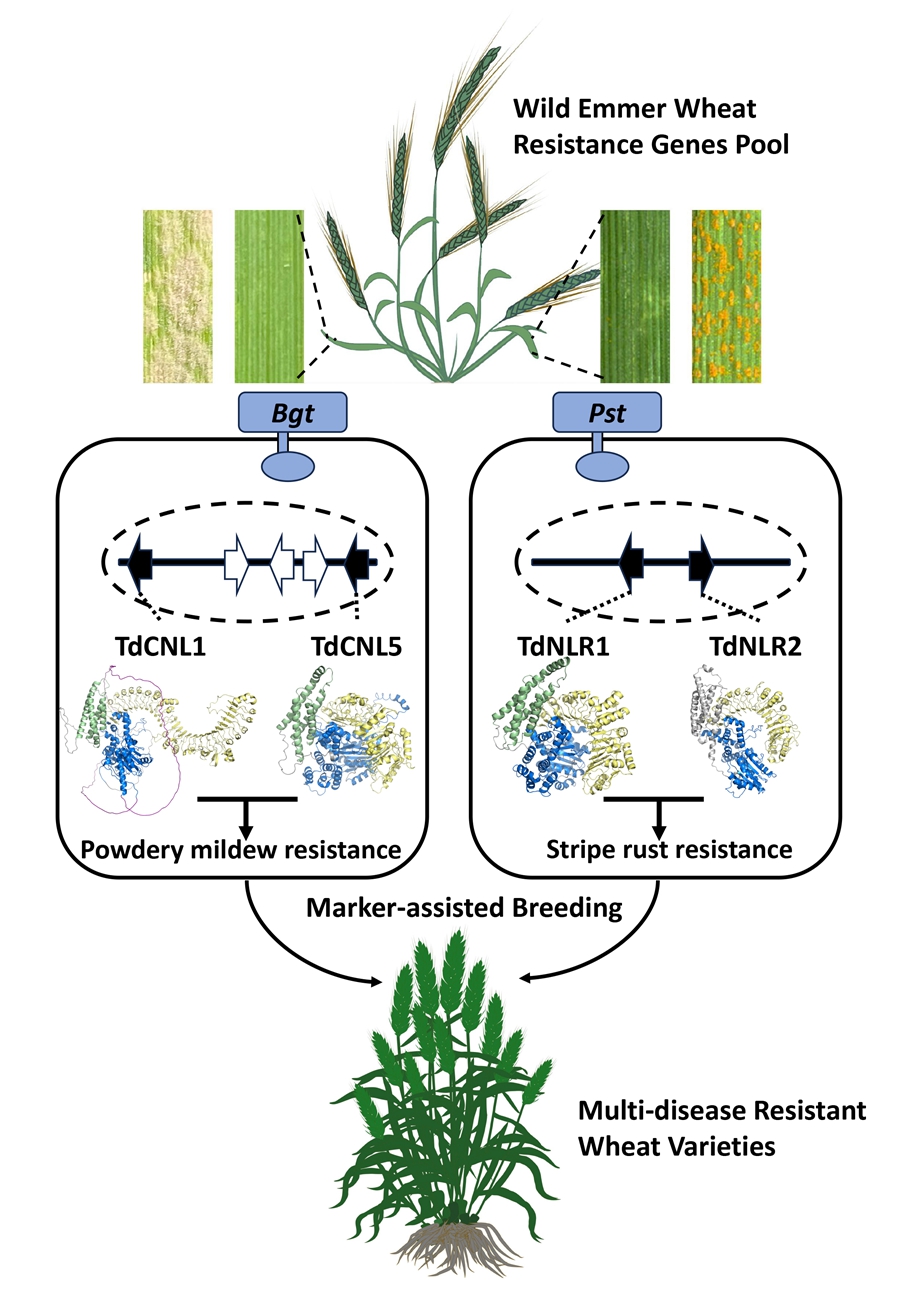A research team led by Prof. LIU Zhiyong at the Institute of Genetics and Developmental Biology of the Chinese Academy of Sciences has identified two novel genetic mechanisms for disease resistance in wheat, offering promising strategies to enhance resilience against powdery mildew and stripe rust. The discoveries were published in back-to-back articles in Nature Genetics on June 9.
The studies reveal that both the powdery mildew resistance locus MlIW170 (also known as Pm26) and the stripe rust resistance locus YrTD121—both derived from wild emmer wheat (Triticum dicoccoides)—are governed not by single genes but by pairs of genes that encode nucleotide-binding leucine-rich repeat (NLR) immune receptors. These gene pairs represent an atypical architecture in plant immunity and offer new insights into the evolution and function of disease resistance mechanisms in crops.
In the
powdery mildew study, the researchers used map-based cloning and PacBio HiFi long-read sequencing to identify
TdCNL1 and
TdCNL5—a genetically linked pair of NLR genes responsible for the resistance conferred by the
Pm26 locus.
TdCNL1 encodes an NLR protein with a novel potassium-dependent sodium-calcium exchanger (NCKX) integrated domain, while
TdCNL5 encodes a canonical coiled-coil NLR (CNL). Functional assays, including mutagenesis and virus-induced gene silencing, confirmed that both genes are essential for resistance. Notably, transgenic wheat lines expressing both genes—or
TdCNL1 alone—were resistant, whereas lines expressing only
TdCNL5 remained susceptible.
Similarly, in the
stripe rust study, the team identified a head-to-head–oriented gene pair,
TdNLR1 and
TdNLR2, underlying the
YrTD121 disease resistance locus.
TdNLR1 encodes a canonical NLR protein, while
TdNLR2 lacks the typical coiled-coil domain. Despite their structural differences, both genes were found to be indispensable for resistance, as demonstrated through mutagenesis, gene silencing, CRISPR editing, and transgenic experiments. Interestingly, neither gene contains integrated effector-recognition domains, suggesting a distinct and previously uncharacterized NLR configuration. Moreover, the coiled-coil domain of TdNLR1 was shown to self-associate and trigger cell death in
planta—a hallmark of immune activation.
Wild emmer wheat, the ancestor of modern bread wheat, has accumulated rich genetic variation through long-term adaptation to complex environments. However, the MlIW170/Pm26 and YrTD121 loci from wild emmer wheat are found in only a few wild emmer wheat populations and were not part of the domestication or evolution of bread wheat. The researchers have developed high-yielding, disease-resistant germplasms with MlIW170/Pm26 and YrTD121 by crossing wild emmer wheat with high-yielding bread wheat varieties and performing continuous backcrossing with marker-assisted selection.
These findings offer crucial disease resistance gene resources and a theoretical basis for breeding broad-spectrum and multi-disease–resistant wheat varieties.
The cloning of powdery mildew resistance gene Pm26 and stripe rust resistance gene YrTD121 from wild emmer wheat (Triticum dicoccides) and their breeding application (Image by IGDB)





